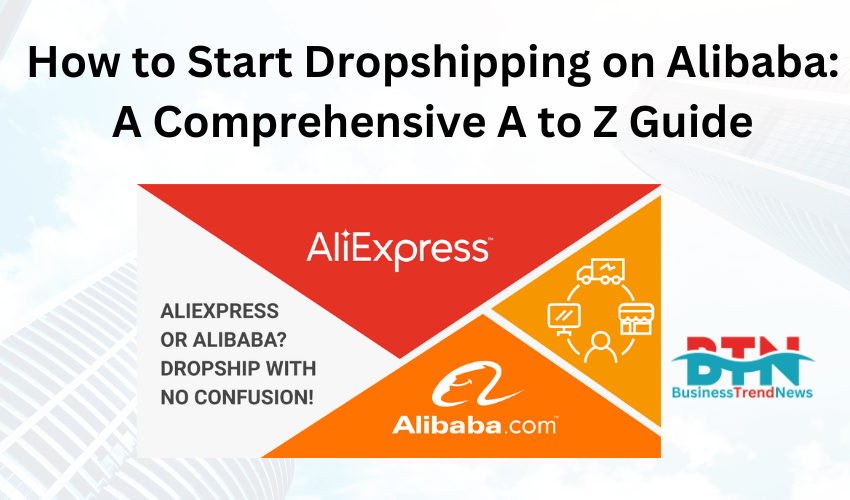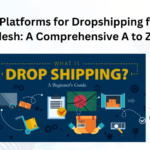![]()
How to Start Dropshipping on Alibaba: A Comprehensive A to Z Guide
Dropshipping is a popular business model where you sell products online without having to manage inventory. Alibaba, one of the largest global e-commerce platforms, offers a wide range of products that are perfect for dropshipping. By sourcing products from Alibaba and selling them on your own website or marketplace like Amazon, eBay, or Shopify, you can create a successful business with minimal upfront investment. Here’s an A to Z guide on how to start dropshipping on Alibaba.
A. Understanding Dropshipping on Alibaba
Before diving into dropshipping, it’s essential to understand the basic business model. In dropshipping, you set up an online store, list products from suppliers (such as those found on Alibaba), and when a customer makes a purchase, you forward the order to the supplier, who ships the product directly to the customer.
- Benefits of Dropshipping:
- No inventory management.
- Low upfront costs.
- Easy to scale as your business grows.
- You can offer a wide variety of products.
- Challenges:
- Low-profit margins in competitive niches.
- Dependence on suppliers for quality control and shipping.
- Longer shipping times (especially from China).
B. Setting Up Your Dropshipping Business
- Choose a Niche:
- A successful dropshipping business usually focuses on a specific niche market, such as electronics, fashion, health, or beauty. Choose a niche based on your interests, research, and profitability. Consider trends, customer demand, and competition.
- Tip: Use tools like Google Trends, keyword research tools (e.g., Ubersuggest), and online forums to identify profitable niches.
- Set Up Your Online Store:
- To sell products, you’ll need an e-commerce platform. Popular platforms for dropshipping include Shopify, WooCommerce, and BigCommerce. Set up your store by choosing a domain name, theme, and payment options.
- Recommended Platforms:
- Shopify: User-friendly and integrates well with dropshipping apps like Oberlo.
- WooCommerce: Free and customizable, ideal for WordPress users.
- BigCommerce: Powerful features for scaling your business.
C. Finding Products to Sell on Alibaba
- Create an Alibaba Account:
- Head over to Alibaba.com and create a free account. You’ll need this account to communicate with suppliers and place orders.
- Search for Products:
- Use Alibaba’s search bar to find products related to your niche. You can filter results based on categories, suppliers, price range, and minimum order quantity (MOQ).
- Tip: Look for products with high sales volume, good reviews, and verified suppliers.
- Evaluate Suppliers:
- Not all suppliers are the same, so it’s crucial to vet them carefully. Look for:
- Verified Suppliers: These suppliers have undergone additional checks and verification by Alibaba.
- Gold Suppliers: Suppliers who have paid for a higher membership level and often indicate more trustworthy businesses.
- Reviews and Ratings: Check customer feedback to see if previous buyers were satisfied with product quality and shipping times.
- Not all suppliers are the same, so it’s crucial to vet them carefully. Look for:
- Negotiate with Suppliers:
- Dropshipping requires flexibility from suppliers, as they will be shipping products directly to your customers. When reaching out to suppliers, ask if they support dropshipping and can ship items without including their branding or invoices.
- Key Questions to Ask:
- Do you offer dropshipping services?
- What are your shipping times and costs?
- Can you provide product customization or private labeling?
- What are your minimum order quantities?
D. Creating a Dropshipping Agreement
Once you’ve identified a few potential suppliers, it’s time to formalize the arrangement with a dropshipping agreement. This document outlines:
- Pricing terms and profit margins.
- Shipping times and handling costs.
- Returns and refund policies.
- Product quality guarantees.
This step helps protect your business from potential disputes and ensures clear communication with your suppliers.
E. Pricing and Profit Margins
- Calculate Your Costs:
- To set your retail price, you need to consider your wholesale price from Alibaba, shipping costs, platform fees, and marketing expenses.
- Set Competitive Prices:
- Research your competitors’ pricing strategies and aim for competitive prices while maintaining reasonable profit margins. Typically, a 20-40% markup is recommended for dropshipping.
- Shipping Costs:
- Be sure to factor in shipping costs, especially for international orders from Alibaba. Free shipping options (ePacket) are often slower but more affordable.
F. Setting Up Product Listings
Now that you have suppliers, products, and pricing in place, it’s time to list products on your online store.
- Write Detailed Product Descriptions:
- Include all necessary information such as product dimensions, features, materials, and shipping details. Be clear about shipping times, especially if sourcing from Alibaba, where delivery can take weeks.
- Use High-Quality Images:
- Use professional images provided by the supplier or take your own. Make sure the images are clear and showcase the product from various angles.
- Optimize Listings for SEO:
- Use relevant keywords in your product titles and descriptions to help your products appear in search engine results. This can drive more traffic to your store.
G. Marketing Your Dropshipping Store
Marketing is crucial to the success of your dropshipping business. Without it, no one will know about your store or products. Here are some effective marketing strategies:
- Social Media Marketing:
- Create profiles on platforms like Facebook, Instagram, and TikTok to promote your products and engage with your audience. Paid advertising on these platforms is a great way to target specific demographics.
- Influencer Marketing:
- Partner with influencers in your niche to showcase your products to a broader audience. Micro-influencers (with fewer followers) often charge less but can provide targeted promotion.
- Search Engine Optimization (SEO):
- Optimize your website and product pages for search engines to drive organic traffic. This involves keyword research, improving page loading speed, and getting backlinks from reputable websites.
- Email Marketing:
- Build an email list and regularly send out promotional offers, new product launches, and useful content to keep customers engaged.
H. Managing Orders and Fulfillment
- Placing Orders with Suppliers:
- Once a customer places an order on your website, you’ll forward the details to your supplier. Make sure to include the customer’s shipping address and any specific instructions.
- Tracking Orders:
- Ensure that your suppliers provide tracking numbers for each order. You can send these to your customers to keep them informed about the shipping status.
- Handling Returns and Refunds:
- Have a clear return policy in place. Some suppliers on Alibaba offer return services, but you should communicate directly with the supplier to manage refunds and returns smoothly.
I. Scaling Your Dropshipping Business
Once your dropshipping store is up and running, it’s time to scale your operations.
- Expand Your Product Range:
- Gradually add new products to your store to offer more variety and cater to more customers. Ensure that you maintain a balance between demand and quality.
- Automate Processes:
- As your business grows, automate routine tasks such as order fulfillment, inventory updates, and customer service using dropshipping apps or plugins (e.g., Oberlo or AliDropship).
- Optimize for Conversions:
- Use data analytics tools like Google Analytics to track your store’s performance. Identify which products are performing well and optimize your listings for higher conversion rates.
- Diversify Sales Channels:
- Consider selling on multiple platforms (Amazon, eBay, Etsy) to reach a broader audience. Each platform has different fees and rules, so research them before expanding.
J. Legal Considerations and Final Thoughts
- Register Your Business:
- Consider registering your business to ensure it operates legally. Depending on your location, this may involve setting up an LLC, acquiring a sales tax ID, and getting the necessary permits.
- Tax Compliance:
- Be aware of the tax obligations that come with running an online business, especially if you’re selling internationally.
Conclusion: Start Dropshipping on Alibaba Today
Dropshipping on Alibaba offers a wealth of opportunities for entrepreneurs. By following this A to Z guide, you can set up a successful dropshipping business with minimal risk and a high potential for growth.



